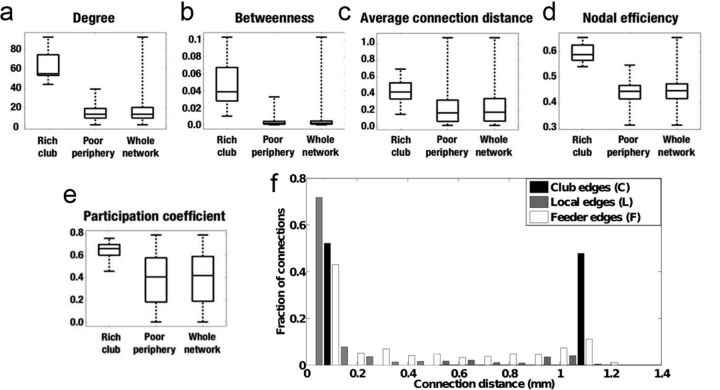Figure 3.
The C. elegans rich club has higher nodal efficiency, betweenness, centrality, participation coefficient, and connection distance than the rest of the nervous system (the poor periphery). a–e, Box plots detailing the distributions of degree, betweenness centrality, average connection distance, nodal efficiency, and participation coefficient (a measure of intermodularity). For each metric, the rich club is compared with the poor periphery and with the network as a whole. f, Distribution of connection distances. Rich club connections have a bimodal distribution, including a relatively large proportion of the longest connection distances in the network and a majority of much shorter distance connections, feeder connections linking a peripheral node to a rich club node have intermediate probability of long connection distance, and local edges linking two peripheral nodes have the lowest probability of a long connection distance.

